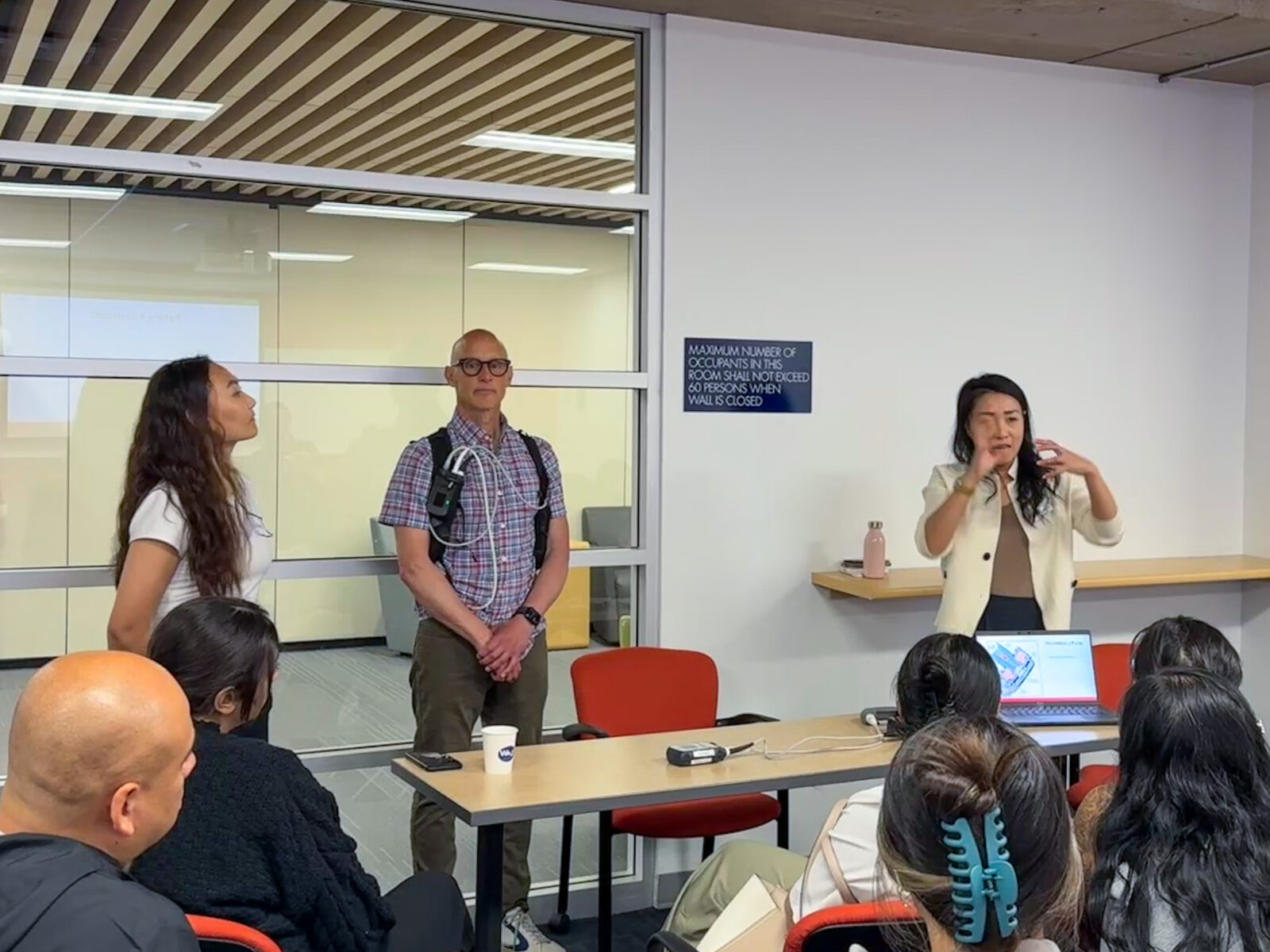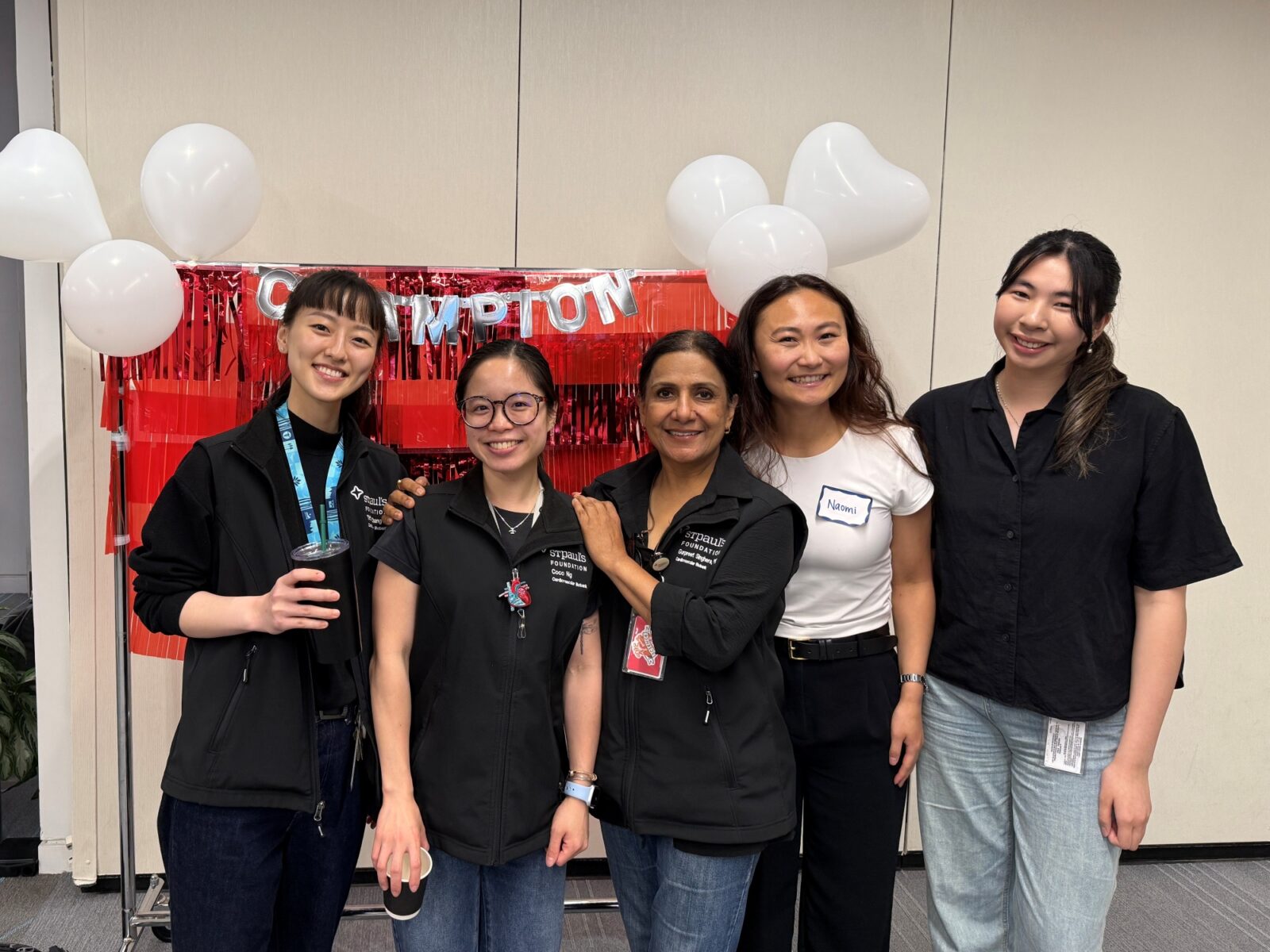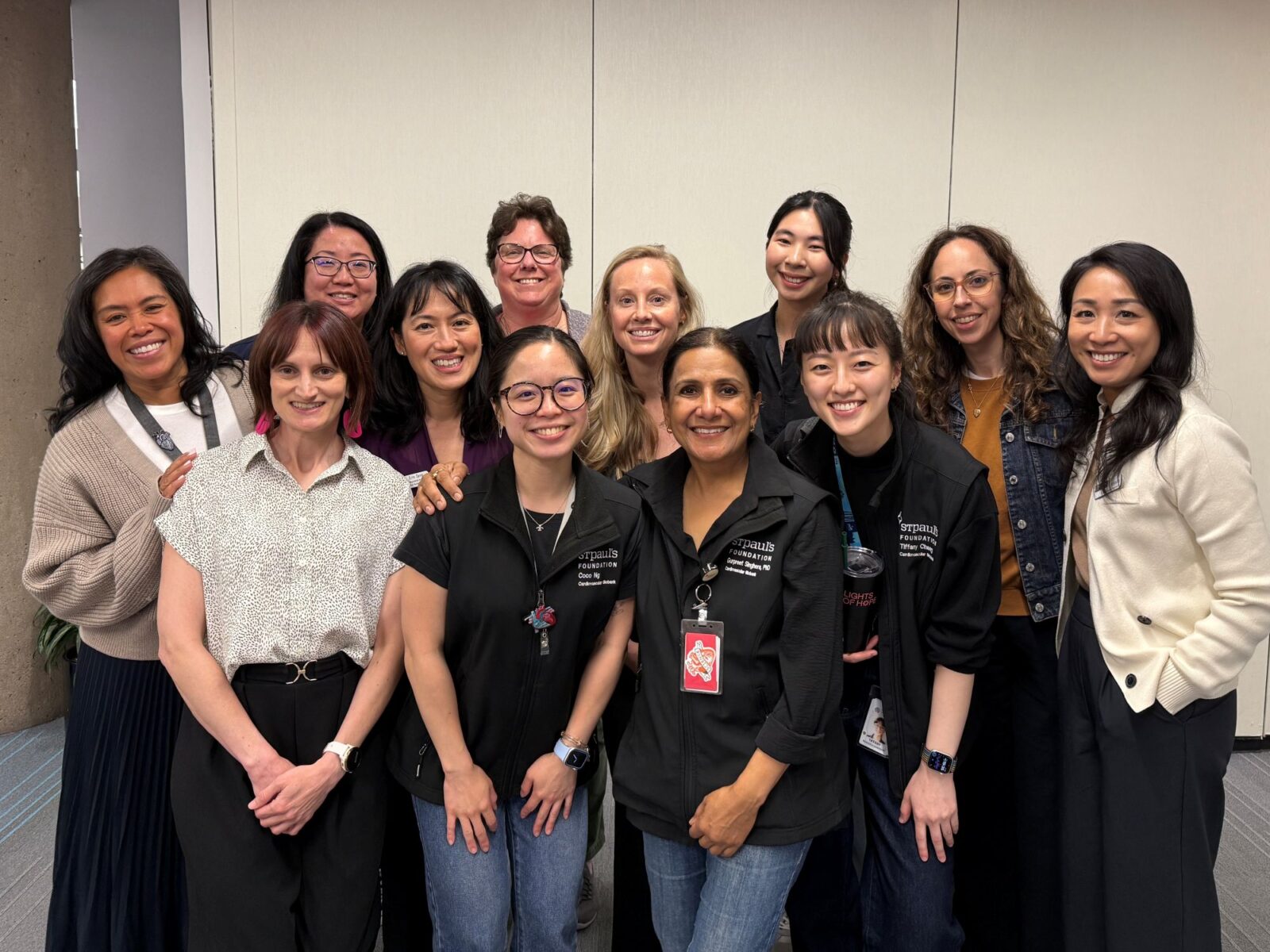At the 2025 Heart Centre Nursing Education Day at St. Paul’s Hospital (SPH) and Providence Health Care (PHC), the Bruce McManus Cardiovascular Biobank (BMCB) hosted a Hands-On-Hearts gross anatomy workshop, where cardiac care nurses were offered the rare opportunity to examine human explanted hearts. Participants saw the physical impact of the diseases they treat every day, including the effects of advanced heart failure and implanted devices like the Left Ventricular Assist Device (LVAD).
This year’s theme, Merging History, Best Practice and Compassion in Cardiac Nursing, brought together expert talks, hands-on workshops and opportunities for connection among nursing professionals. Guest speakers covered a range of topics including pregnancy and heart failure, trauma-informed practice, the evolution of cardiac nursing, women’s heart health, and managing heart failure in the context of mental health and substance use disorders.
The BMCB team, including Dr. Gurpreet Singhera, Coco Ng, Tiffany Chang and Viola Tansuma, showed transplant hearts that revealed structural damage caused by cardiomyopathies, ischemic diseases, and end-stage heart failure. Attendees got to observe, feel, and ask questions about how these conditions manifest physically, which are insights not usually available outside of an anatomy lab.
LVAD workshop: Lived experience and hands-on learning
One standout session was the LVAD workshop, led by SPH nurse and patient educators Rachel Milligan and Josie Mackey, and Clinical Nurse Specialist Wynne Chiu. It followed the patient journey from diagnosis to device implantation, featuring stories from LVAD recipients Mike Mclellan and Naomi Lee. The VAD is a life-saving device used in severe, often end-stage heart failure. When the heart becomes too weak to pump blood properly, the LVAD takes over the pumping function, keeping blood circulating through the body.

Mike, who lives with an LVAD, shared what daily life is like with the device, including how he manages battery life and navigates airport security checks. Hearing directly from Mike offered a unique, powerful perspective on the lived experience of VAD patients, highlighting the importance of patient partnership in understanding the realities of care beyond the clinical setting.
Naomi also shared her experiences of living with a VAD for 10 months. Naomi is a second-year nursing student and heart transplant recipient, who received her new heart at age 20. For the biobank team, it was a special moment to reconnect with Naomi. They first met shortly after her transplant, when she visited the biobank to view her own explanted heart.

Since her transplant, Naomi has redirected her professional path from elementary education to healthcare. She now volunteers with organizations such as HeartLife Canada, the Heart and Stroke Foundation of Canada, the Transplant Research Foundation of BC, and BC Transplant. Motivated by the care she received, Naomi hopes to draw from her lived experience as a patient to give back and support others in the healthcare system.
Hands-On Learning with Human Hearts
Later in the day, the BMCB team led the hands-on session and viewing of failed explanted hearts. The session offered cardiac care nurses the rare opportunity to examine hearts affected by conditions such as myocardial infarction, fibrosis and cardiomyopathy, including one specimen with an implanted LVAD. It also highlighted how biobanking of heart tissues plays a critical role in advancing medical research and improves patient care.
For many cardiac care nurses, this was a unique learning opportunity that offered a firsthand look at how the diseases they treat every day appear in the organ itself. The chance to hold and inspect l actual hearts tied together earlier discussions on heart failure and device therapy, offering a full-circle learning experience.

Thank you to the Providence Health Care Heart Centre staff for hosting the valuable event and inviting the biobank to take part in this meaningful day of learning.
